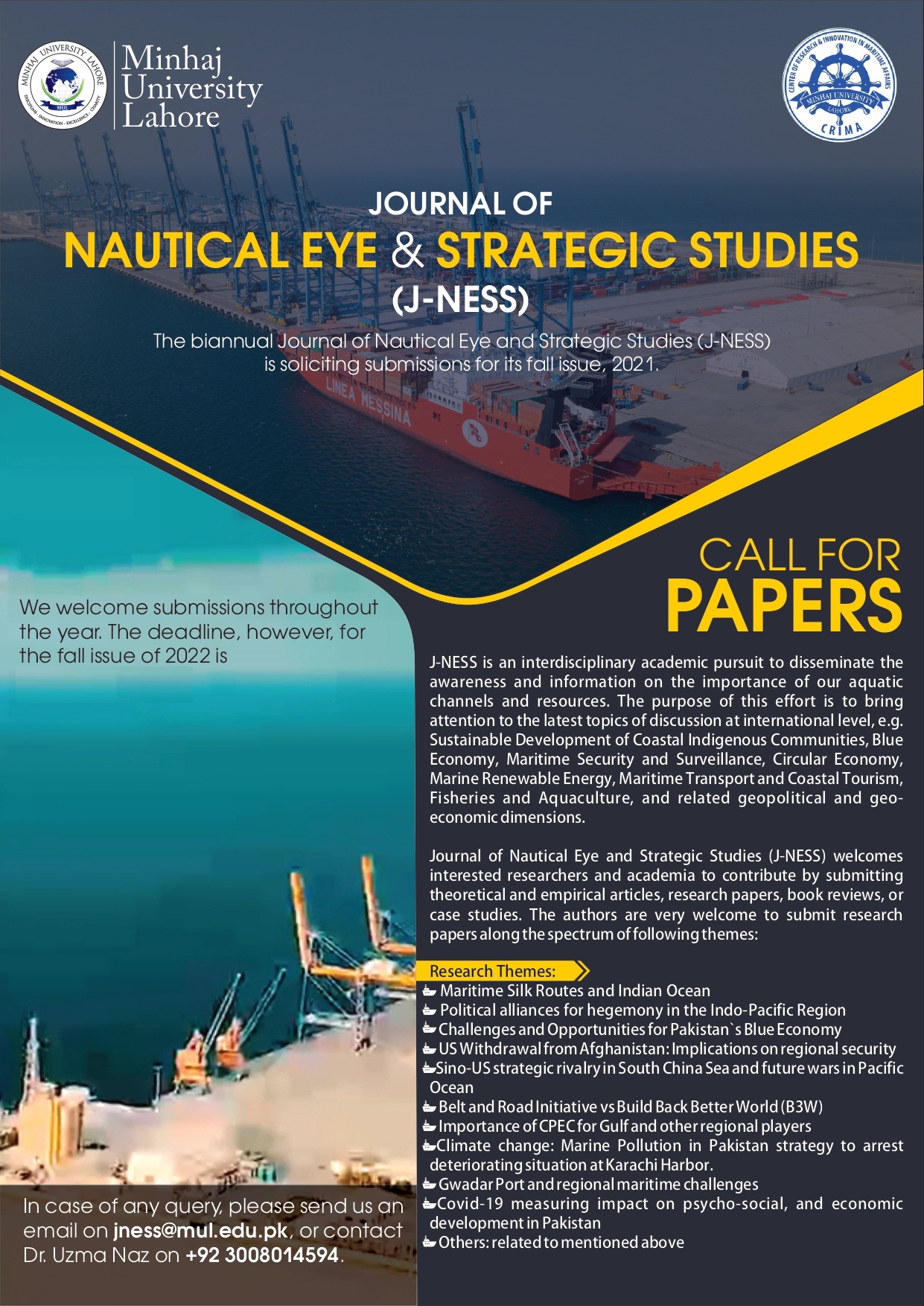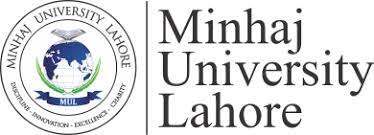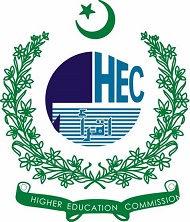US-China Strategic Rivalry in Asia Pacific: Opportunities and Challenges for Regional States
DOI:
https://doi.org/10.58932/MULG0033Keywords:
Asia Pacific, US-China rivalry, China-Pakistan Economic Corridor, One Belt One Road InitiativeAbstract
The twenty-first century is the Asian century. The US, the superpower of the world, and China, the rising power are tilting towards the Asia Pacific region. Both powers are engaged in a power struggle to secure their respective national interests in the region. The study aims to analyze the power politics between the US and China, their interests and strategies in the region, and the response of Asia-Pacific states to the US-China rivalry. The opportunities and challenges for regional states due to US-China rivalry and engagement in the region are analyzed in terms of economic, political, and social. The US is utilizing its strategic tools to maintain its sole superpower status, while rising China pursues to enhance its influence, initially in Asia Pacific and then around the globe. Neo-realists propound the thesis that the changing dynamics of the international system urge states to compete with each other. Neorealism rightly explains the US-China rivalry in Asia Pacific. The primary data was gathered from subject experts through an interview questionnaire. The secondary data was collected from books, articles, reports, and dissertations. The results show that the US is hindering the rise of China, and the latter is challenging the former, through building alliances with regional states in the economic, military, and social domains. Some of the regional countries are inclined towards the US, and others are prone towards China. Based on the data collected it has been recommended that all countries should maintain a delicate balance between both major powers because in today’s globalized world of interdependence, not any state can afford complete disengagement from the other. The great power politics and US-China rivalry will continue for decades to come.
References
Ahmed, R. F. (2020, December 30) Significance of Asia Pacific Region. The Dayspring. Retrieved November 18, 2021, from https://www.thedayspring.com.pk/significance-of-asia-pacific-region/
Allison, G. (2017). Destined for War: Can America and China escape Thucydides's Trap? (Kindle Edition ed.). New York, USA: Scribe Publications. Retrieved 2017, from https://www.amazon.com/Destined-War-America-Escape-Thucydidess-ebook/dp/B01IAS9FZY?pldnSite=1
Anwar, A. (2019, October 4) Strengthening US Relations with ASEAN: A Critical Element of the US Indo-Pacific Strategy. East-West Center. Retrieved November 20, 2021, from https://www.eastwestcenter.org/news-center/eastwest-wire/strengthening-us-relations-asean-critical-element-the-us-indopacific
Bi, S. (2021) Cooperation between China and ASEAN under the building of ASEAN Economic Community. Journal of Contemporary East Asia Studies, 10:1, 83- 107, DOI: 10.1080/24761028.2021.1888410.
Chan, E. (2021) China’s Maritime Security Strategy: The Evolution of a Growing Sea Power Corbett Centre for Maritime Policy Studies Series. Routledge Publishers. DOI: 10.4324/9781003158523.
Council on Foreign Relations (2021) China’s Martitime Disputes. Retrieved 20 November, 2021, from https://www.cfr.org/timeline/chinas-maritime-disputes
Davies, M. (2020) Repairing the US–ASEAN relationship. East Asia Forum. Retrieved November 20, 2021 from https://www.eastasiaforum.org/2020/03/14/repairing-the-us-aseanrelationship/
Fisher, M. & Carlsen (2018, March 9) How China Is Challenging American Dominance in Asia. New York Times. Rtrieved November 20, from https://www.nytimes.com/interactive/2018/03/09/world/asia/china-us-asiarivalry.Html
Gaens, B. (2020). Great-Power Competition and the Rising US-China Rivalry towards a New Normal? FIIA. Punamusta Oy. Retrieved January 24, 2021, from FIIA website: https://www.google.com/url?sa=t&rct=j&q=&esrc=s&source=web&cd=&cad=rja&uact=8&ved=2ahUKEwj3vJTLi7XuAhVOZcAKHW6TDxwQFjABeg
QIAxAC&url=https%3A%2F%2Fwww.fiia.fi%2Fwpcontent%2Fuploads%2F2020%2F09%2Freport66_great-powercompetition_rising-us-chinarivalry_web.pdf&usg=AOvVaw3xxSi6KzkQeStGF2VTw63C
Glamann, P. Liu, L. Arnold, M. (2021, June 10) China Asserts Broad Power to Seize Assets in Anti-Sanctions Law. Bloomberg. Retrieved November 20, 2021 from https://www.bloomberg.com/news/articles/2021-06-10/chineselawmakers-pass-bill-intended-to-fight-u-s-sanctions
Gong, X. (2020). China’s Economic Statecraft: The Belt and Road in Southeast Asia and the Impact on the Indo-Pacific. Security Challenges, 16(3), Special Issue: The Indo-Pacific: From Concept to Contest, 39-46. Retrieved January 24, 2021, from http://www.jstor.org/stable/10.2307/26924338?refreqid=searchgateway:a48eb0f2e341aac96c31489ebc0abd94
Hirst, T. (2014, May 21) The world’s most important trade route? World Economic Forum. Retrieved November 18, 2021, from https://www.weforum.org/agenda/2014/05/world-most-important-trade-route/
Khan, Z. (2015). ‘Pivot’ and ‘Rebalancing’: Implications for Asia-Pacific Region. JSTOR. Policy Perspectives, 12(2), 3-28. Retrieved January 23, 2021, from http://www.jstor.org/stable/10.13169/polipers.12.2.0003?refreqid=searchgateway:
cbd8c0ef0138545757242e558234614
Kim, S. (2020). Regional Responses to U.S.-China Competition in the Indo-Pacific Study Overview and Conclusions. RAND Corporation. Retrieved January 24, 2021, from https://www.rand.org/pubs/research_reports/RR4412.html
Kuruwita, R. (2020, October 27) Sri Lanka Will Soon Have to Pick a Side in the China-US Rivalry. The Diplomat. Retrieved November 2020, from https://thediplomat.com/2020/10/sri-lanka-will-soon-have-to-pick-a-side-inthe-
china-us-rivalry/
Lee, Y. N. (2021) Taiwan is the most dangerous flashpoint in U.S.-China relations, says former diplomat. CNBC. Retrieved November 18, 2021, from https://www.cnbc.com/2021/07/01/taiwan-is-most-dangerous-flashpoint-inus-
china-relations-ex-diplomat.html
Mukherjee, T. (2018, April 24) China’s Maritime Quest in the Indian Ocean: New Delhi’s Options. The Diplomat. Retrieved November 20, 2021, from https://thediplomat.com/2018/04/chinas-maritime-quest-in-the-indian-oceannew-delhis-options/
Pomfret, J. (2018) Opinion: China’s debt traps around the world are a trademark of its imperialist ambitions. Washington Post. Retrieved November 21, 2021, from https://www.washingtonpost.com/news/globalopinions/
wp/2018/08/27/chinas-debt-traps-around-the-world-are-a-trademarkof-its-imperialist-ambitions/
Rossow, R. M. (2021) U.S.-India Defense Ties: Rebalancing the Indo-Pacific. Centre for Strategic and International Studies. Retrieved November 18, 2021, from https://www.csis.org/blogs/adapt-advance-refreshed-agenda-us-indiarelations/us-india-defense-ties-rebalancing-indo
Summers, T. (2018). US-China Strategic Rivalry and its Implications. Research Gate. Retrieved January 23, 2021, from
https://www.researchgate.net/publication/329449885_USChina_Strategic_Rivalry_and_its_Implications
Tagotra, N. (2017, December 21). The US National Security Strategy and Great Power Relations. The Diplomat. Retrieved January 23, 2021, from https://thediplomat.com/2017/12/the-us-national-security-strategy-and-greatpower-relations/
Wellman, J. (2013). Risky Business: The Long Term Impacts of the Obama Administration's Pacific Pivot. Journal of Strategic Security, 6(3Suppl), 407-414. doi:10.5038/1944-0472.6.3s.36. Retrieved January 24, 2021, from https://scholarcommons.usf.edu/jss/vol6/iss5/38/
Xuanzun, L. & Yuandan G. (2021, March 12) US military activities in S. China Sea in 2020 unprecedented. Global Times. Retrieved 20 November, 2021, from https://www.globaltimes.cn/page/202103/1218193.shtml
Downloads
Published
How to Cite
Issue
Section
License
Copyright (c) 2024 Journal of Nautical Eye and Strategic Studies

This work is licensed under a Creative Commons Attribution-NonCommercial 4.0 International License.










